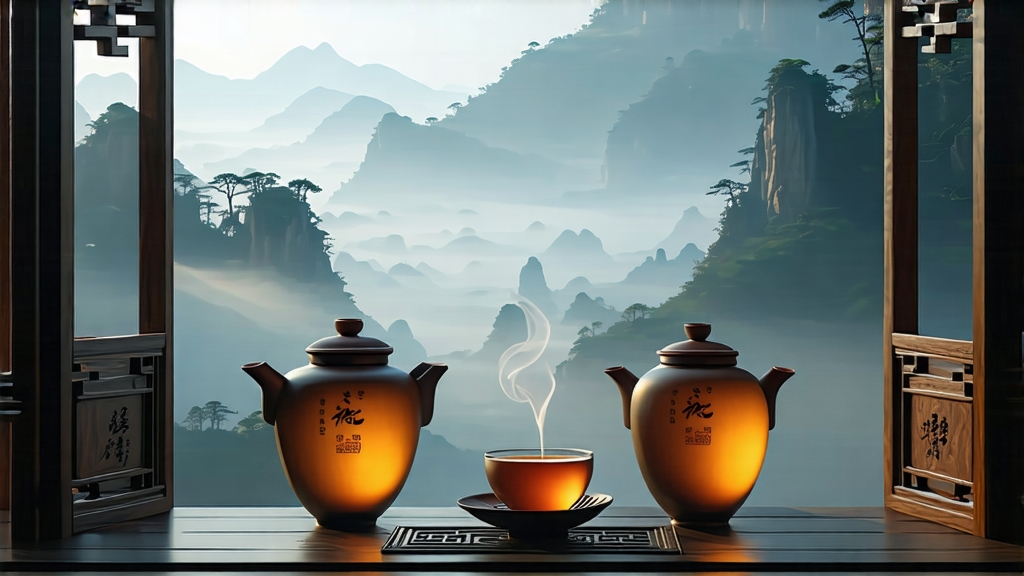
Liu Bao, pronounced “lee-ow bao,” is the quiet diplomat of China’s dark-tea family. While Pu-erh grabs headlines and Fu Zhuan bricks star in museum vitrines, Liu Bao has spent four centuries mellowing in the humid karst foothills of Guangxi, emerging only when it has something profound to say. To the uninitiated it looks like humble twigs dusted with cocoa; to the initiated it tastes like a silk scroll of forest honey, camphor and betel nut unfurling across the tongue. This article invites the global tea traveler to listen to that scroll.
-
From Border Tea to World Tea
The story begins in the early 1600s, when Wuzhou city served as the last river port before merchant boats entered the Xi Jiang system and sailed south to Guangzhou and, eventually, Southeast Asia. Tea grown in the adjacent Liu Bao village was steamed, pressed into 40-kilogram bamboo baskets, and loaded onto bamboo rafts. The voyage could take months; humidity crept through the weave, coaxing invisible microbes into action. By the time the tea reached Kuala Lumpur or Singapore it had darkened, softened, and acquired a medicinal sweetness prized by tin-mine laborers who needed a digestif that could survive the tropics. Thus Liu Bao became one of China’s first truly international teas, a maritime “silk road” dark tea centuries before the term belt-and-road was coined. -
Terroir: Where Rocks Breathe
The Liu Bao micro-region lies at 23–24° N, 600–1000 m above sea level, inside the warm belly of the Tropic of Cancer. Granite peaks force warm, moist air upward; nightly fogs condense on tea leaves, feeding them with dissolved minerals. The soil is a stony laterite rich in iron and potassium—so much so that locals joke the dirt itself is half tea. Indigenous cultivars—Xiao Ye Zhong (small-leaf), Zhong Ye Zhong (mid-leaf), and the rare Bai Hao variant—have evolved thick cell walls that withstand repeated wet-piling without collapsing into mulch. The result is a leaf that can age for decades yet still unfurl in the gaiwan like a living manuscript. -
Craft: The Secret of “One Water, One Fire, One Rest”
Modern Liu Bao is still made in the rhythm of the lunar calendar. Around Qingming, villagers hand-pick one bud plus third or fourth leaf—the mature leaf provides the polyphenols needed for post-fermentation. After brief indoor withering the leaves are wok-fried at 280 °C for eight minutes, hot enough to kill green enzymes but leave a whisper of moisture. Next comes the unique “one water” step: leaves are sprayed with Wuzhou’s mineral-rich river water, piled 70 cm high under jute cloth, and left to ferment for 10–18 hours. Thermophilic bacteria (primarily Aspergillus niger and Bacillus subtilis) raise the heap’s core to 55 °C, turning the leaf mass from emerald to chestnut in a single night. The pile is then “one fire” roasted over Malaysian longan wood at 80 °C for 30 minutes, locking in a smoky undertone that will later mature into camphor. Finally the tea is given “one rest,” sun-dried on bamboo trays for three days before being packed into 30–50 kg rattan baskets lined with untreated banana leaf. The baskets are stacked in riverside caves where relative humidity hovers at 75–85 %, allowing slow, aerobic aging that can last anywhere from three to fifty years. -
The Basket Codes
Connoisseurs read Liu Bao like wine lovers read Burgundy labels. A basket stamped “三鹤” (Three Cranes) indicates the state-owned Wuzhou Tea Factory; “0101” denotes first-grade leaf from the first quarter. Private kilns such as “中茶” (Zhong Cha) or “苍顺” (Cang Shun) experiment with longer wet-piling, yielding a deeper betel-nut note. Vintage baskets from the 1980s carry a faint petroleum aroma—an artifact of the diesel generators used during cave storage—yet within six months of opening the off-note evaporates, leaving behind a clean, jujube-like sweetness that collectors prize. -
Brewing: The Gongfu Time Machine
Liu Bao rewards patience but does not demand it. A simple gaiwan (120